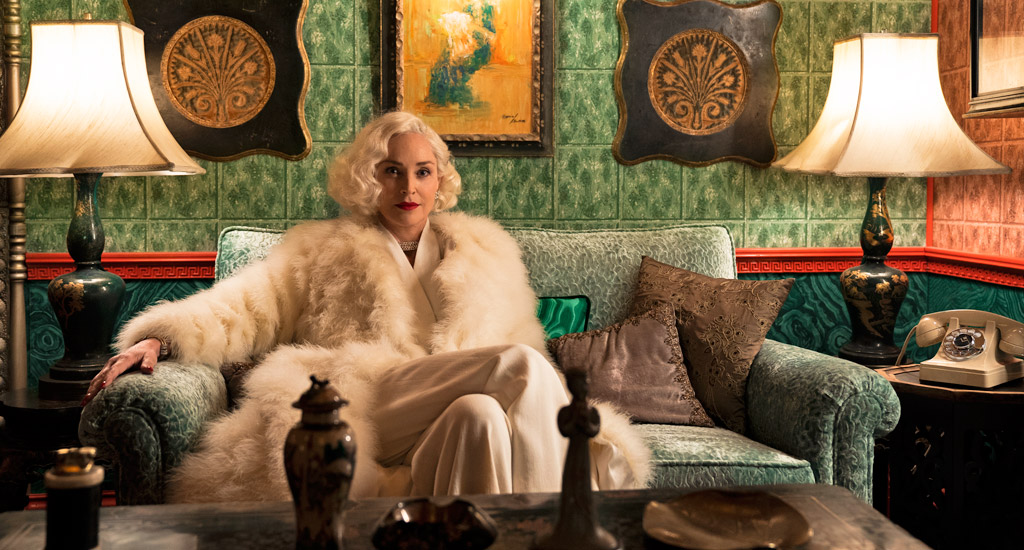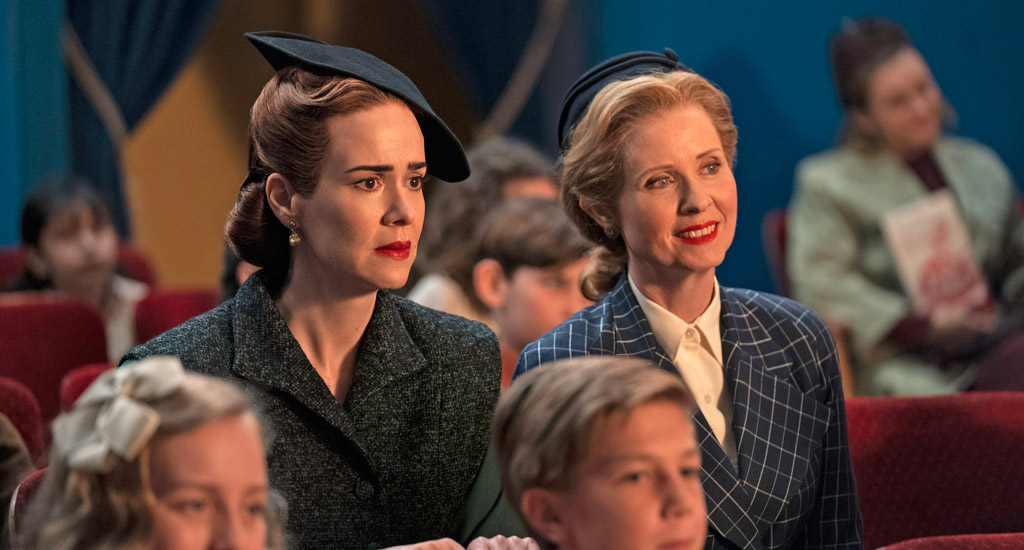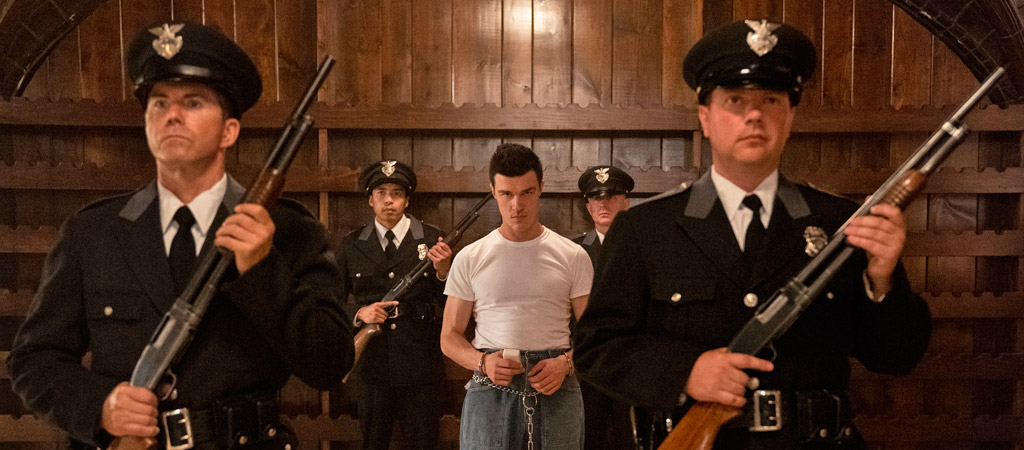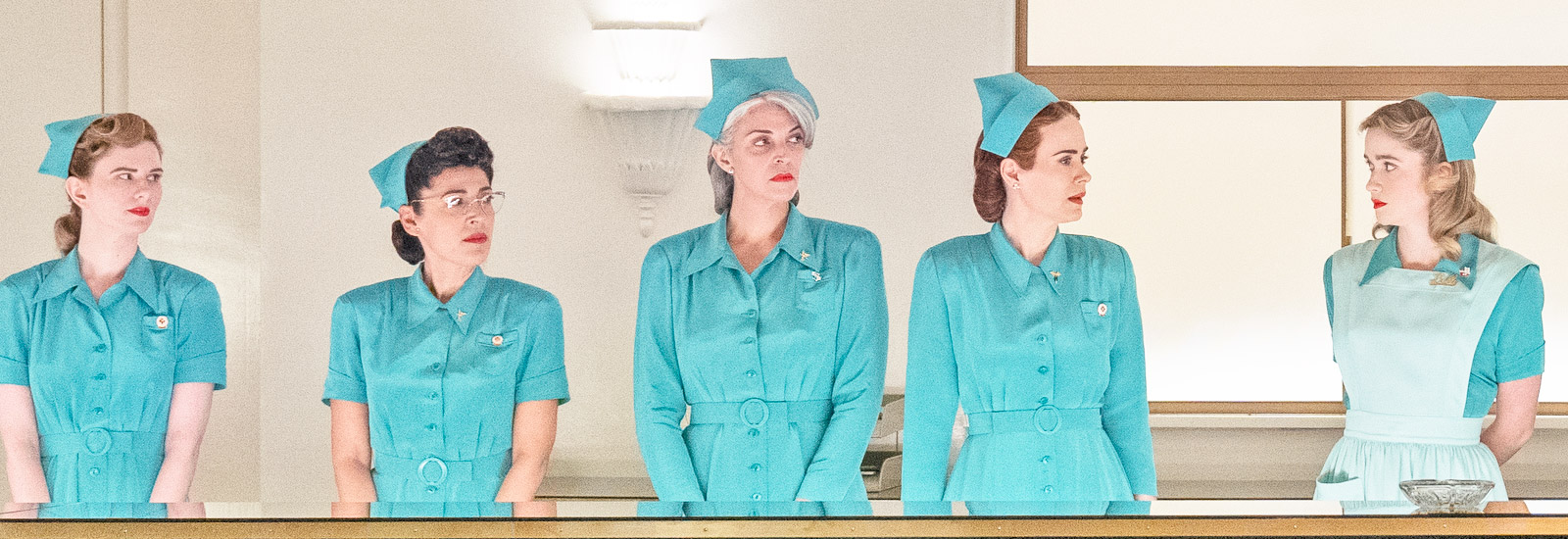Netflix loves Ryan Murphy and Ryan Murphy loves Sarah Paulson. They’ve all come together to make Ratched, which is a sort-of meditation upon the iconic villain of the Milos Forman-helmed One Flew Over the Cuckoo’s Nest. The 1976 film won five Oscars, including Best Picture, Best Director, and Best Actress — that one went to Louise Fletcher for originating the Nurse Ratched role. This series aims to present her backstory, but to call Ratched an origin story (or even a pseudo-origin story) misses the mark. This is not the straight-up psychological drama that people might want. Instead, this is a twisted devotional, one that has been rolled around in true Murphy fashion. The end product is stylish and entertaining and fun to watch, but it is extremely messy.
When I say “messy,” I’m referring to the story and execution because visually, like any Murphy production, things look great. This combination of stylishness (no one does vibrant color quite like Murphy) and lawlessness should not be a complete surprise. Murphy adores stylish horror, as is evident with American Horror Story, and he digs messing with backstories, as is the case with Hollywood, in which he literally rewrote history. With Ratched, though, people will unavoidably arrive with certain expectations. They want to see how Mildred Ratched became the terrorizing asylum nurse from the Jack Nicholson flick. That is not an unreasonable thing to want to witness, but this show delivers more of a fever dream that points in the general direction of what is to come. Really, it’s down to pacing. It shouldn’t take a whole season to construct a set-up that could be accomplished in 2-3 episodes, or even a pilot.

So yes, it’s a fever dream but one with, like, gratuitous amputations that don’t push the Nurse Ratched storyline. There are side characters like the one played by Sharon Stone that makes you squint and muse, “that’s a very Sharon Stone role, but yeah, too much of an obvious Sharon Stone role for this to actually be Sharon Stone.” Lo and behold, it truly is Sharon Stone, practically making love to the scenery rather than chew it up because it’s all too pretty to destroy. There are moments when I truly did wonder what Murphy was smoking while shooting this arc. Granted, I kept watching because it’s still a binge-y, engaging show. Yet easily, this story could be about another asylum nurse (and surrounding hospital happenings) with a different name than Ratched.
Side plots, man. Murphy planned this to be a slow-burn series, so there’s a lot of padding because he mapped-out four seasons, for which two got the greenlight with the initial series order. After four seasons, we’re supposed to see Mildred “facing off against the Jack Nicholson character from the movie,” according to Murphy. That would be four seasons until we see Ratched meet up with the other iconic figure of the franchise — it’s a long time. And potentially frustrating.
What does satisfy, though, is a handful of fantastic performances in what could rightfully be called a show that’s vaguely inspired by Cuckoo’s Nest. Sarah Paulson is still riveting with the material that she’s given, to play a kind-of Ratched. Cynthia Nixon is dynamite as Mildred’s closeted lesbian lover, Gwendolyn Briggs, a rare public servant who’s truly infused with humanity. And Judy Davis does a bang-up job as Nurse Betsy Bucket, who is actually a lot more unsettling than Ratched herself. All manner of engrossing things happen over eight episodes, but it takes the full duration to more-than-suggest that Mildred Ratched, asylum nurse, could flourish into an actual villain. She’s not even an antihero, which is potentially more disturbing than the story itself.

The late 1940s set-up begins with another Murphy mainstay, Finn Whitrock, as Edmund, who murders several priests and lands in Lucia State Hospital. The joint is run by Dr. Hanover (Jon Jon Briones), but the (sordid) soul of the place is embodied by Judy Davis’ Nurse Bucket. Mildred Ratched descends and swindles herself into a job while slowly starting to take control. The governor (Vincent D’Onofrio) would like to use the hospital to aid his latest campaign, and Nixon’s Gwendolyn is his press secretary. Everyone harbors secrets. And naturally, no one really knows what the hell they are doing with these experimental treatments, years before Ratched wielded electroshock therapy like it was her kink. Again, there are reminders that Ratched will eventually be capable of these future acts, but here, she’s much more vaguely unsettling than straight-up terrifying.
Where do we end up with Ratched? Some sort of story-purgatory; a bizarre trip where one can get lost for several hours. It’s not an ambitious enough story to be called a reimagining, and it’s not faithful to the source material. It’s more like fan fiction: really sympathetic, humanizing fan fiction about Mildred Ratched. Her visible bone-chilling acts, overall, are far outweighed by her compassionate moves. This feels like a fantastical rewriting of an iconic villain that — as far as the first season goes — comes out looking (at least in comparison to multiple other characters on the show) relatively benevolent. That’s a problem because Nurse Ratched, during Cuckoo’s Nest, emerged fully formed in her villainy. She was scary because we didn’t know how she became so dehumanized. Filling in that mystery could have been a worthy pursuit, but the glacial pace doesn’t help make the case.
Ultimately, the key to enjoying Ratched is managing expectations. Naturally, Murphy’s nursing his own elements of fixation, including homosexuality and eroticism, along with his brand of packaging. The visuals are beautiful — from a rugged coastline to polished interiors and, of course, fashionable attire — and contrasted with torturous treatments given to psychiatric patients. This sets up a constant tug-of-war for a viewer, who’s alternately seduced by lush visuals while repelled by, like, the whole ice-pick-lobotomy thing, and the excruciating, boiling “steam” baths used as treatment.
One can read into this series as a statement on the U.S. mental health care system, but the treatment feels too exploitative for that kind of messaging. Further, if you’re looking for a legit origin story here, you’ll probably walk away unimpressed. Yet if you’re here for the discombobulating fever dream, this quasi-nightmarish series will have you covered.
Ratched streams via Netflix on September 18.








